Introduction
Launching a fintech startup in the MENA region presents both significant opportunities and unique challenges. The region’s rapid digital transformation, young population, and underbanked markets make it a fertile ground for fintech innovation, especially in payment solutions. However, success in this space demands a deep understanding of market trends, consumer behaviors, and regulatory environments.
This white paper outlines practical steps and trusted sources for secondary market research that fintech founders can use to gain these insights. We will cover how to collect data from global authorities, local government sources, and recognized market research platforms, and offer actionable guidance on synthesizing and applying the findings to your business strategy.
Why Market Research is Critical for Fintech Startups
Market research allows fintech founders to:
- Identify gaps in financial services, particularly in underserved markets.
- Understand consumer trust in digital payment systems.
- Keep up with regulatory frameworks and compliance requirements.
- Determine the competitive landscape and pinpoint market entry strategies.
Without proper research, fintech startups risk overestimating demand, underestimating competition, or falling short of compliance with local laws, all of which can lead to costly mistakes.
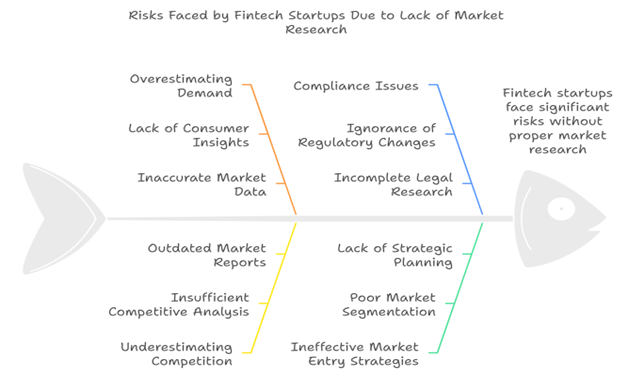
Structured Steps to Conduct Market Research for a Fintech Startup
Step 1: Define Your Research Objectives
Start by clarifying the key questions your research needs to answer. For a fintech payment solution in the MENA region, some questions might include:
- What is the current market size for digital payment solutions in the region?
- What is the level of financial inclusion and smartphone penetration in target countries?
- Who are the major players and competitors in the market?
- What are the regulatory requirements for digital payment services in different MENA countries?
By defining these objectives, you can narrow your search and focus on the most relevant data.
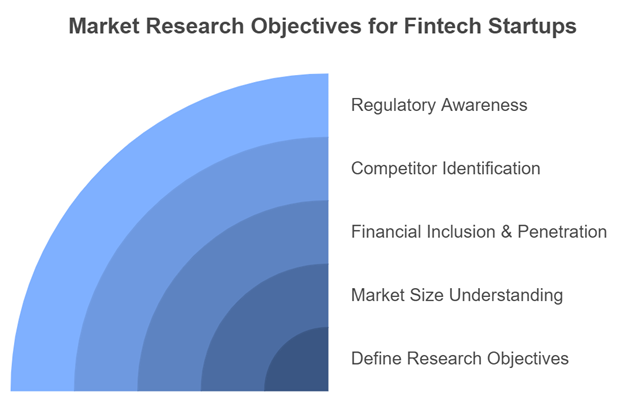
Step 2: Tap into Global Authorities for Macroeconomic Data
Global financial institutions provide a wealth of data that can help assess the economic and financial infrastructure in the MENA region. Key sources include:
- World Bank: Offers comprehensive data on financial inclusion rates, mobile banking penetration, and digital payment usage across different MENA countries. This helps estimate potential market size and adoption rates.
- International Monetary Fund (IMF): Provides country-specific data on GDP, inflation, and financial system stability, which are important for assessing overall economic health and payment adoption potential.
- World Trade Organization (WTO): Offers insights on trade flows and digital services across borders. For a fintech startup, cross-border payment trends in the MENA region are crucial, as many countries have significant expatriate populations who send and receive remittances.
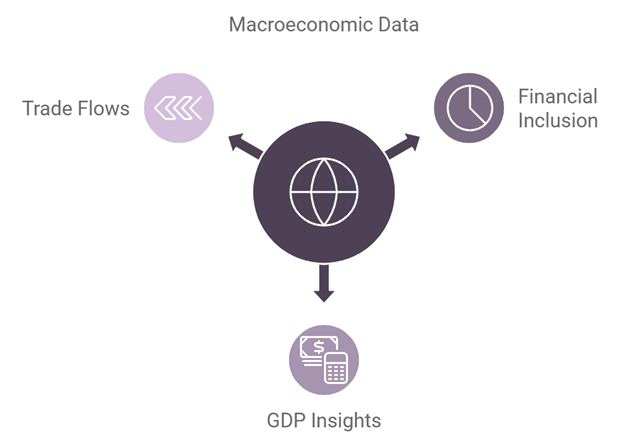
Step 3: Focus on Local Governmental and Regulatory Data
Navigating the regulatory landscape is a critical component for fintech startups. Governmental sources can provide detailed insights into regulations, customer demographics, and digital infrastructure:
- Central Banks and Financial Regulators: Each MENA country has its own central bank or financial authority that regulates digital payment systems. Websites of the Saudi Central Bank (SAMA), Central Bank of Egypt (CBE), and Central Bank of the UAE offer information on licensing requirements, fintech regulations, and open banking initiatives.
- National Statistics Agencies: These agencies, such as Egypt’s Central Agency for Public Mobilization and Statistics (CAPMAS) or the UAE’s Federal Competitiveness and Statistics Authority, provide data on population demographics, internet usage, smartphone penetration, and income levels—key metrics for assessing your target market’s readiness for digital payment solutions.
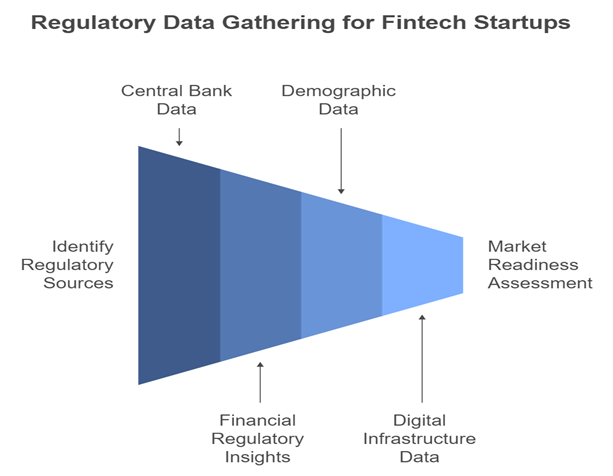
Step 4: Use Market Research Firms for Industry-Specific Insights
To get a granular view of the fintech industry, founders should leverage insights from established market research firms. Some highly recommended platforms include:
- McKinsey & Company: McKinsey’s reports on the MENA region’s digital economy offer detailed insights into consumer behavior, fintech growth, and emerging technologies such as blockchain and AI in finance.
- Statista: Provides comprehensive statistics on digital payments, mobile banking, and e-commerce transactions in the MENA region. Subscription to industry reports can offer data on transaction volumes, leading payment apps, and fintech user demographics.
- Euromonitor International: Offers a rich repository of reports on digital consumerism, including insights into payment solutions and financial services adoption in different parts of the MENA region.
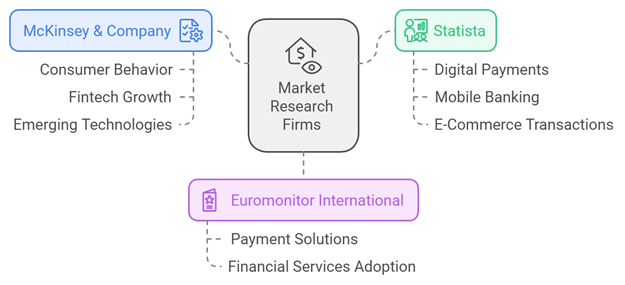
Step 5: Analyze and Synthesize the Data
Once you’ve gathered data, it’s time to analyze and make sense of the numbers. Here’s how to approach it:
- Compare Data Across Sources: Cross-check figures from global authorities and local data to ensure consistency. Look for trends such as rising mobile payment adoption, shifts in consumer behavior, or new regulatory developments.
- Segment the Market: Divide your data into meaningful categories, such as by geography, customer demographics (e.g., income levels, age groups), and transaction types (e.g., B2C, B2B, remittances). This will help identify key segments that align with your startup’s value proposition.
- Look for Trends: Analyze the growth rate of digital payments across different countries in MENA. For example, the rapid increase in smartphone usage and e-commerce in Egypt and Saudi Arabia suggests higher demand for mobile payment solutions.
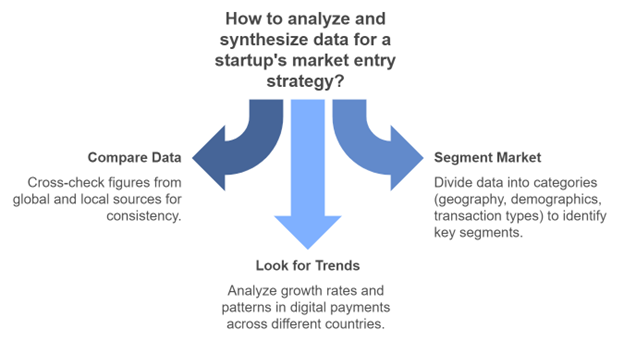
Step 6: Apply Insights to Your Strategy
With clear insights in hand, founders can make informed decisions. For example:
- Target Specific Markets: Based on data showing high smartphone penetration and digital payment adoption in Saudi Arabia and the UAE, you might decide to prioritize these countries for market entry.
- Tailor Products to Customer Needs: If your research shows a high demand for remittance services among expatriates in the UAE, focus on cross-border payment solutions.
- Comply with Regulations: Use the insights from financial regulators to ensure your payment solution adheres to local laws, which vary across MENA countries in areas such as data privacy and anti-money laundering (AML) compliance.
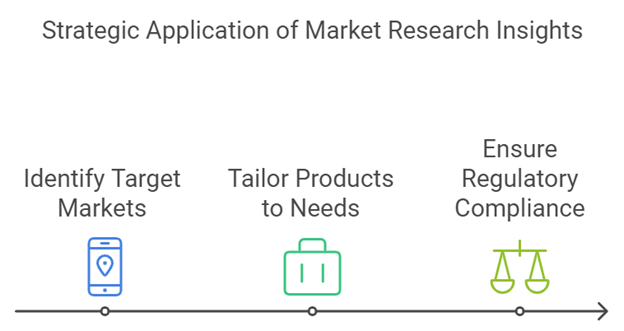
conclusion
By following a structured market research process, fintech founders can uncover valuable insights that guide strategic decisions. This white paper outlines how to leverage credible global and local sources, analyze the data, and apply findings to your business. The case study of a fintech startup targeting payment solutions in the MENA region illustrates how this research can be turned into actionable business strategies, from selecting target markets to tailoring services for specific customer segments.
With solid market research, fintech founders can confidently navigate the dynamic MENA market, driving innovation and growth in the region’s digital economy
🚀 Ready to fuel your startup’s growth? Join multiples.cc today! Gain access to valuable tools, connect with investors, and get personalized support to help you succeed on your fundraising journey. Sign up now and take the next step toward securing the resources your startup needs to thrive!






Add comment